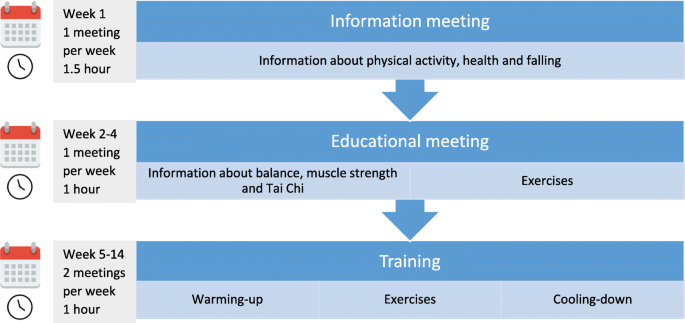Fascination About Dementia Fall Risk
The Ultimate Guide To Dementia Fall Risk
Table of ContentsSee This Report on Dementia Fall Risk10 Easy Facts About Dementia Fall Risk ExplainedOur Dementia Fall Risk PDFs5 Simple Techniques For Dementia Fall Risk
An autumn danger analysis checks to see just how likely it is that you will certainly fall. It is mainly provided for older adults. The assessment usually consists of: This consists of a collection of inquiries concerning your overall health and if you've had previous drops or troubles with equilibrium, standing, and/or walking. These tools check your toughness, balance, and gait (the way you walk).STEADI includes testing, evaluating, and intervention. Interventions are recommendations that may minimize your risk of dropping. STEADI consists of 3 steps: you for your risk of dropping for your risk aspects that can be improved to try to stop drops (for instance, balance problems, impaired vision) to reduce your danger of dropping by making use of effective approaches (as an example, offering education and learning and resources), you may be asked several questions including: Have you fallen in the previous year? Do you feel unsteady when standing or strolling? Are you fretted about dropping?, your supplier will examine your stamina, balance, and stride, making use of the adhering to fall evaluation devices: This test checks your gait.
Then you'll sit down once more. Your copyright will certainly examine for how long it takes you to do this. If it takes you 12 seconds or even more, it may indicate you are at higher threat for an autumn. This examination checks strength and equilibrium. You'll sit in a chair with your arms went across over your upper body.
The positions will certainly obtain more difficult as you go. Stand with your feet side-by-side. Move one foot midway forward, so the instep is touching the big toe of your various other foot. Relocate one foot fully before the various other, so the toes are touching the heel of your various other foot.
What Does Dementia Fall Risk Do?
Most falls take place as a result of several adding aspects; therefore, managing the danger of dropping starts with determining the elements that add to drop threat - Dementia Fall Risk. A few of the most relevant threat factors include: History of prior fallsChronic medical conditionsAcute illnessImpaired stride and equilibrium, reduced extremity weaknessCognitive impairmentChanges in visionCertain high-risk medicines and polypharmacyEnvironmental elements can additionally increase the threat for falls, consisting of: Inadequate lightingUneven or harmed flooringWet or slippery floorsMissing or harmed handrails and order barsDamaged or improperly equipped tools, such as beds, mobility devices, or walkersImproper use of assistive devicesInadequate guidance of individuals have a peek at this website living in the NF, consisting of those that show hostile behaviorsA effective loss risk administration program requires a detailed scientific analysis, with input from all participants of the interdisciplinary team

The treatment strategy need to likewise consist of interventions that are system-based, such as those that promote a secure setting (ideal lighting, hand rails, get hold of bars, and so on). The performance of the interventions need to be reviewed occasionally, and the treatment plan revised as necessary to reflect changes in the autumn risk assessment. Carrying out an autumn threat monitoring system using evidence-based ideal practice can reduce the prevalence of falls in the NF, while restricting the potential for fall-related injuries.
Some Of Dementia Fall Risk
The AGS/BGS guideline advises screening all adults aged 65 years and older for loss threat annually. This testing contains asking patients whether they have fallen 2 or more times in the past year or looked for clinical focus for an autumn, or, if they have actually not fallen, whether they feel unstable when walking.
People that have fallen when without injury must have their balance and stride evaluated; those with gait or balance problems must obtain additional analysis. A history of 1 fall without injury and without stride or equilibrium problems does not require additional analysis beyond continued annual autumn danger screening. Dementia Fall Risk. A loss danger analysis is Web Site required as component of the Welcome to Medicare evaluation

The 15-Second Trick For Dementia Fall Risk
Recording a falls history is one of the top quality indicators for loss prevention and monitoring. Psychoactive medicines in certain are independent predictors of falls.
Postural hypotension can often be relieved by minimizing the dose of blood pressurelowering drugs and/or quiting medicines that have orthostatic hypotension as a negative effects. Use above-the-knee assistance hose and copulating the head of the bed raised might additionally reduce postural decreases in blood pressure. The advisable aspects of a fall-focused physical exam are displayed in Box 1.

A yank time higher about his than or equivalent to 12 seconds recommends high fall risk. The 30-Second Chair Stand examination analyzes lower extremity toughness and balance. Being unable to stand up from a chair of knee elevation without making use of one's arms shows raised autumn risk. The 4-Stage Equilibrium examination assesses static equilibrium by having the client stand in 4 settings, each progressively extra challenging.